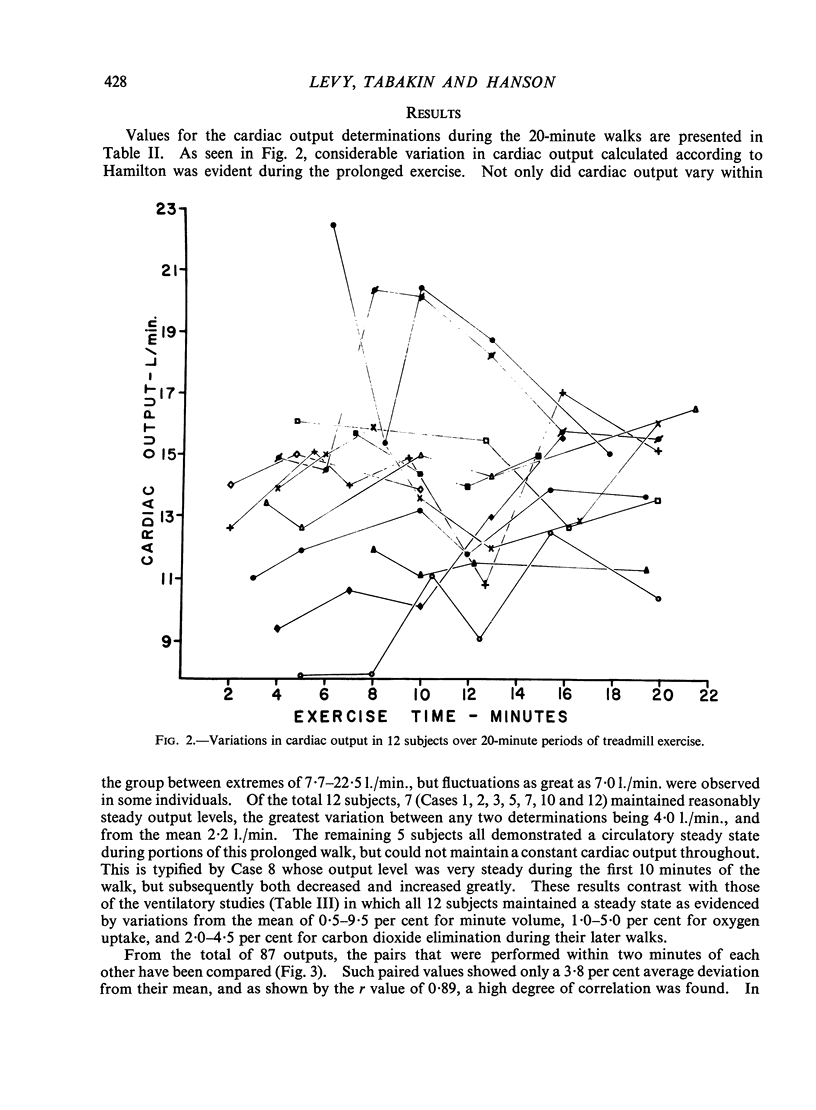Full text
PDF







Selected References
These references are in PubMed. This may not be the complete list of references from this article.
- BARRATT-BOYES B. G., WOOD E. H. Hemodynamic response of healthy subjects to exercise in the supine position while breathing oxygen. J Appl Physiol. 1957 Jul;11(1):129–135. doi: 10.1152/jappl.1957.11.1.129. [DOI] [PubMed] [Google Scholar]
- CHAPMAN C. B., FRASER R. S. Studies on the effect of exercise on cardiovascular function. I. Cardiac output and mean circulation time. Circulation. 1954 Jan;9(1):57–62. doi: 10.1161/01.cir.9.1.57. [DOI] [PubMed] [Google Scholar]
- DEXTER L., WHITTENBERGER J. L., HAYNES F. W., GOODALE W. T., GORLIN R., SAWYER C. G. Effect of exercise on circulatory dynamics of normal individuals. J Appl Physiol. 1951 Feb;3(8):439–453. doi: 10.1152/jappl.1951.3.8.439. [DOI] [PubMed] [Google Scholar]
- DONALD K. W., BISHOP J. M., CUMMING G., WADE O. L. The effect of exercise on the cardiac output and circulatory dynamics of normal subjects. Clin Sci. 1955 Feb;14(1):37–73. [PubMed] [Google Scholar]
- DOYLE J. T., WILSON J. S., LEPINE C., WARREN J. V. An evaluation of the measurement of the cardiac output and of the so-called pulmonary blood volume by the dye-dilution method. J Lab Clin Med. 1953 Jan;41(1):29–39. [PubMed] [Google Scholar]
- Hickam J. B., Cargill W. H. EFFECT OF EXERCISE ON CARDIAC OUTPUT AND PULMONARY ARTERIAL PRESSURE IN NORMAL PERSONS AND IN PATIENTS WITH CARDIOVASCULAR DISEASE AND PULMONARY EMPHYSEMA. J Clin Invest. 1948 Jan;27(1):10–23. doi: 10.1172/JCI101912. [DOI] [PMC free article] [PubMed] [Google Scholar]
- KOPELMAN H., LEE G. DE J. The intrathoracic blood volume in mitral stenosis and left ventricular failure. Clin Sci. 1951 Aug;10(3):383–403. [PubMed] [Google Scholar]
- LEVY A. M., HANSON J. S., TABAKIN B. S. Circulatory response to ventilatory obstruction during steady-state exercise. J Appl Physiol. 1961 Mar;16:309–312. doi: 10.1152/jappl.1961.16.2.309. [DOI] [PubMed] [Google Scholar]
- MITCHELL J. H., SPROULE B. J., CHAPMAN C. B. The physiological meaning of the maximal oxygen intake test. J Clin Invest. 1958 Apr;37(4):538–547. doi: 10.1172/JCI103636. [DOI] [PMC free article] [PubMed] [Google Scholar]
- NEELY W. A., WILSON F. C., Jr, MILNOR J. P., HARDY J. D., WILSON H. Cardiac output: a clinical comparison of the direct Fick, dye, and ballistocardiographic methods. Surgery. 1954 Jan;35(1):22–29. [PubMed] [Google Scholar]
- SPROULE B. J., MITCHELL J. H., MILLER W. F. Cardiopulmonary physiological responses to heavy exercise in patients with anemia. J Clin Invest. 1960 Feb;39:378–388. doi: 10.1172/JCI104048. [DOI] [PMC free article] [PubMed] [Google Scholar]
- TABAKIN B. S., HANSON J. S. Response to ventilatory obstruction during steady-state exercise. J Appl Physiol. 1960 Jul;15:579–582. doi: 10.1152/jappl.1960.15.4.579. [DOI] [PubMed] [Google Scholar]


